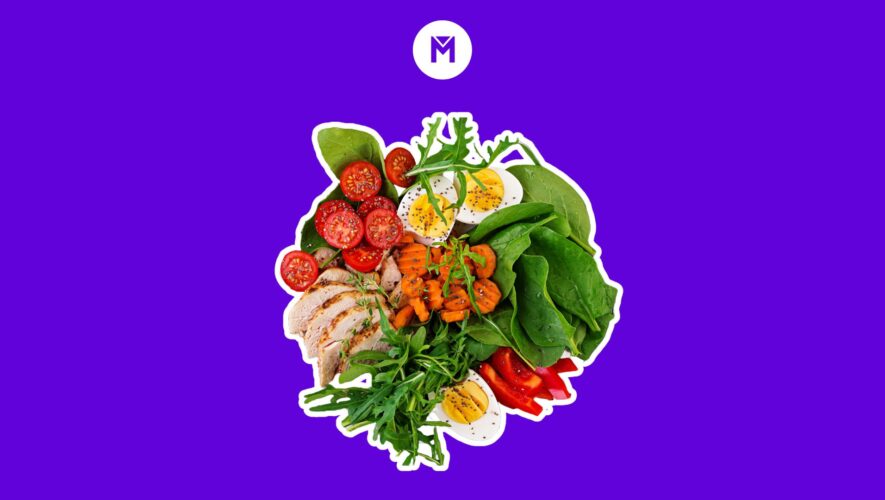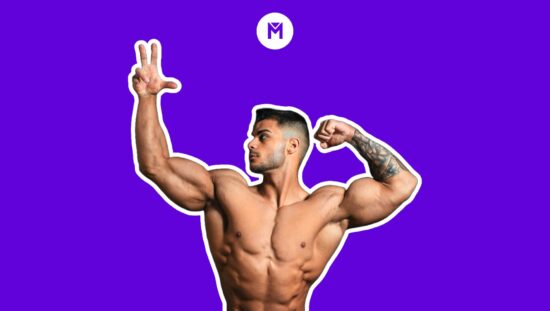If you’re planning on losing weight, you might’ve heard of the Keto diet and its near-magical effects on weight loss.
The idea behind a Keto diet is that by cutting down your carb intake, your body will be forced to use stored fat for energy, leading to weight loss.
This ultimately means that most of your daily caloric intake will come from healthy fats like avocado, nuts, seeds, and oils, with a moderate protein coming from meat, fish, eggs, and more.
In this article, we will dive deep into all things Keto and explore its potential in assisting your weight loss journey.
Let’s cut to the chase and explore the infamous Keto diet and its benefits and drawbacks.
What is a Keto Diet?
A Keto diet is a low-carb, high-fat diet that puts your body in a state of ketosis, where it burns fat for energy instead of carbohydrates.
The diet aims to shift the body’s metabolism from using carbohydrates as its primary energy source to using ketones produced by the liver in the state of ketosis.
The Keto Diet was developed in 1921 by Dr. Russel Morse Wilder, an American Physician.
He stated that most calories in this diet originate from fat, which the body helps burn.
Keto has become one of the most “powerful diets” for weight loss in the last ten years, primarily because of how it works.
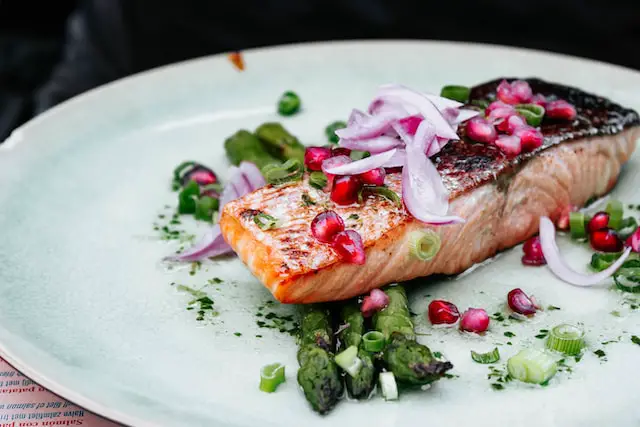
How does it work?
The Keto diet cuts down carbohydrates and increases the amount of fat for 10-14 days, allowing your body to enter the state of ketosis.
This transforms the way your metabolism works and mimics the effects of starvation.
Ketosis is a metabolic state in which the body produces ketones from stored fat for energy instead of glucose from carbohydrates.
This state is typically achieved by following a low-carb, high-fat diet like Keto.
When the body is in ketosis, it burns stored fat for fuel, which can lead to rapid weight loss and improved energy levels.
How to Trigger the Ketosis State?
Since the Keto diet promises weight loss and reduced hunger, it requires critical steps to follow.
I’ll straightaway let you know that it’s going to be more challenging than regular dieting.
You must consider your health conditions and skills as well as how much time you can invest into your health goals.
As per the U.S. Department of Agriculture, the standard American diet consists of 40% of fat, 11% of protein, and 48% of carbs.
So, when you’re planning to start a Keto diet plan, you need to take 55%-60% of fat, 30%-35% of protein, and 5%-10% of carbs.

In other words, to trigger the state of ketosis, you need to consume about 2000 Kcal per day consisting of 30-50g of Carbs, 75g of protein, and 165g of fat in total.
This essentially means that you’ve got to say goodbye to those Cheetos and Potato Chips and end up with maybe just one Choco chip cookie per day.
From today onwards, start reading the nutrition labels of processed foods to see what has high carbs versus high fats.
What does a Keto Diet Look like?
Keto foods generally contain low-carb, moderate protein, and high-fat elements, which might seem very easy to find, but believe me, it gets tricky.
However, after this section, I’ve compiled a list of fantastic Keto foods for you. For now, here’s what an average Keto diet will look like:
- Seafood is rich in Omega 3 fats and is found in a Keto diet.
- Meat and poultry are staple foods in this process.
- Dairy products like milk, cheese, and cream are also included in a Keto diet.
- Green leafy vegetables and high-fat veggies will also be in your diet. Even Broccoli.
You’ll find almonds, walnuts, and macadamia nuts for a quick snack.
For fruits, strawberries, and raspberries because they bring low carbs but high fiber content to your diet.
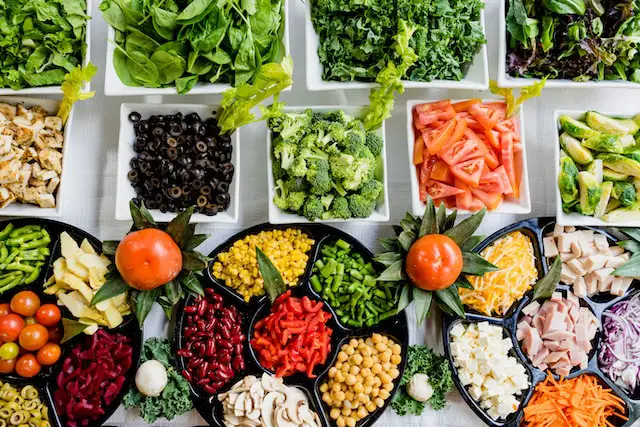
Remember, micro-targeting every element of your diet is critical to achieving ketosis.
What to Eat: Top 10 Keto Foods
The success of a Keto diet directly depends on your ability to find foods with healthy fats.
For this, you’ll need to learn how to read nutrition labels and analyze the fat, carb, and protein content in food.
To help you start a healthy Keto diet, here are ten foods I recommend you should try.
Olives
Olives are literally the highest on this list as far as the fat content is concerned.
With 100g of fat per 100g serving (Yes!), they are perfect for your Keto diet plan.
By incorporating Olives and olive oil into your meals, you can lose weight without compromising on flavor.
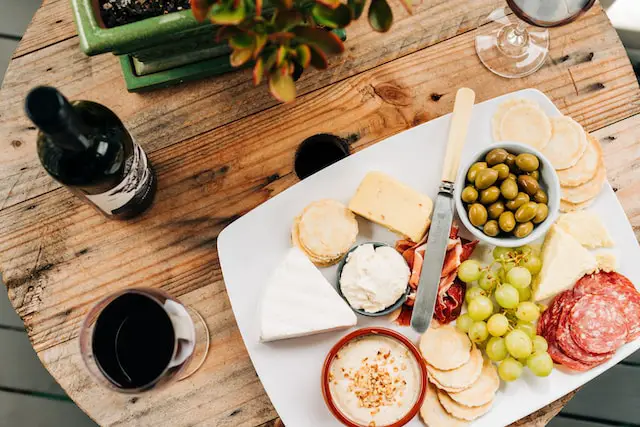
Chicken
Chicken is a fantastic choice for a Keto diet because it is high in healthy fats and protein.
With just 239 calories and 14g of fat per 100g serving, it’ll load you up with a substantial amount of energy for such a low quantity.
It is also one of the high-protein foods bodybuilders require.
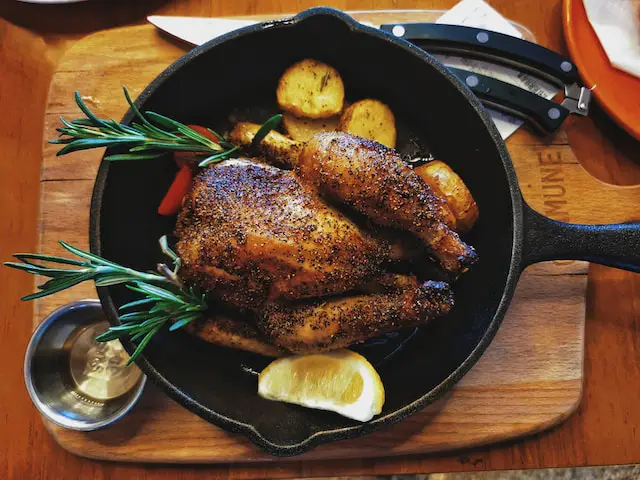
Eggs
Eggs are an affordable source of healthy fats for your Keto diet plan.
With 11g of fat per 100g serving, they make up for an excellent addition to your diet.
Whether you take them boiled, fried, or mashed, you cannot overlook eggs when planning your diet.
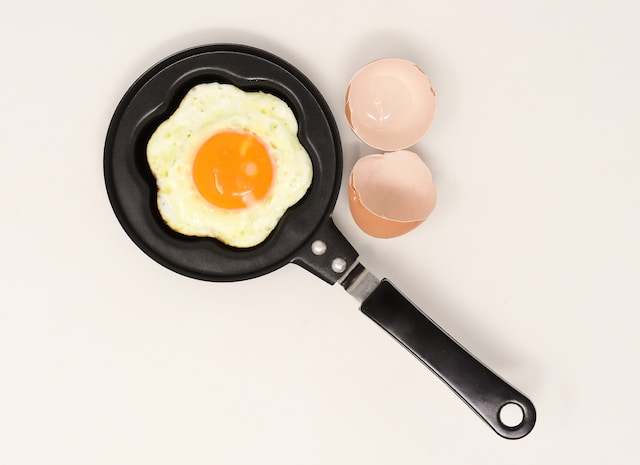
Seafood
Seafood, especially salmon, oysters, and mackerel, are among the best high-fat keto foods you can find.
Salmon contains about 13g of fat per 100g serving, oysters provide similar amounts, and mackerel boasts an impressive 25g of fat per 100g serving.
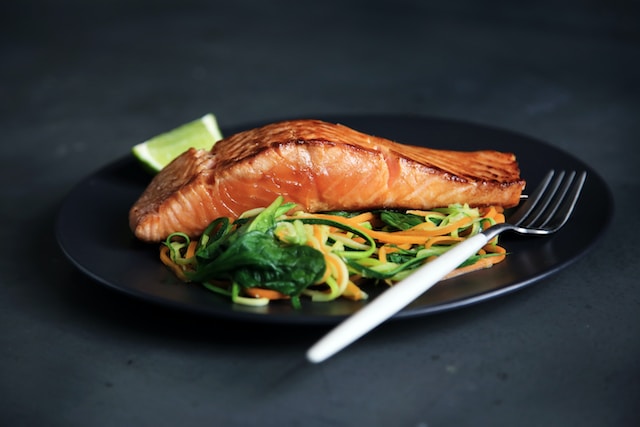
Cheese
Cheese is a universally loved food; fortunately, it can be a part of a healthy Keto diet.
Even though it’s often associated with obesity, consuming it in moderation is fine.
A 100g serving of cheese brings an impressive 33g of fat, making it an excellent addition to your diet.
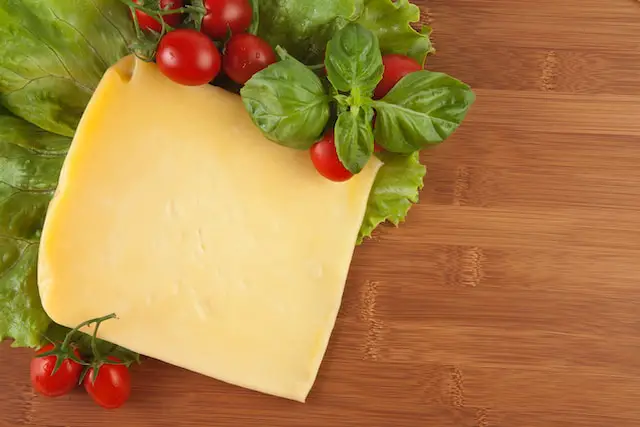
Full Fat Greek Yogurt
This is an excellent choice for a Keto diet, especially as a post-workout meal.
It contains all essential macronutrients with the least amount of carbs.
A 100g serving brings you 75g of fat, which is a significant power-up for your body.
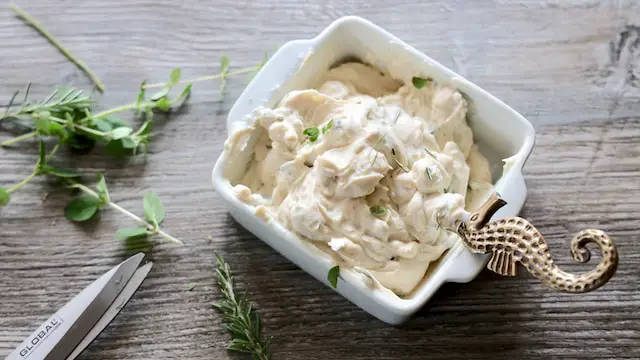
Avocado
Avocado ranks pretty well for a Keto diet because it’s high in healthy fats and really low in carbs.
With about 230 calories per 100g serving, it brings 15g of fat with it.
It is also a highly satisfying and nutrient-dense food that keeps you full for a long time.
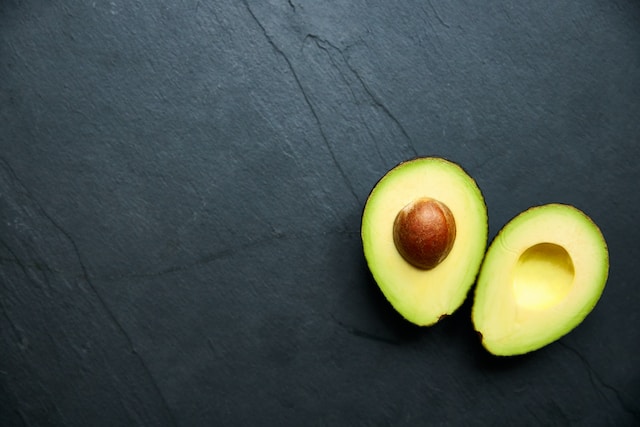
Butter
Butter is a must-have ingredient in any Keto diet, thanks to its high fat, low carb balance, which makes it a perfect addition.
A 100g serving of butter contains an impressive 83g of fat and no carbs with only 717 calories; thus, it is precisely tailored for your Keto diet plan.
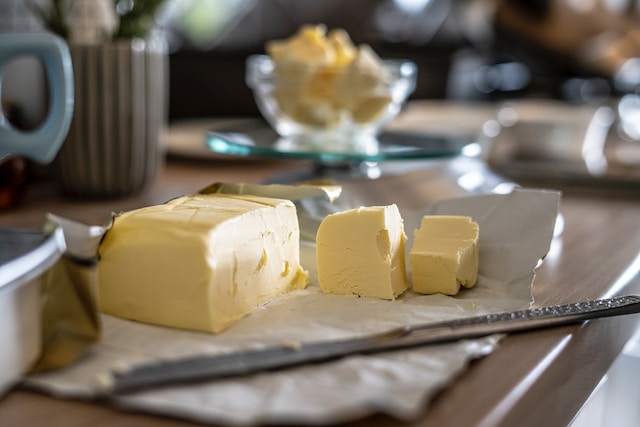
Macadamia Nuts
Macadamia reigns supreme as the ideal nut, boasting the perfect balance of all nutrients your body needs for ketosis.
They are a nutrient-dense snack option with 76g of fat and a mere 15g of carbs per 100g serving.
Either take them raw or after soaking them for optimal nutrition.
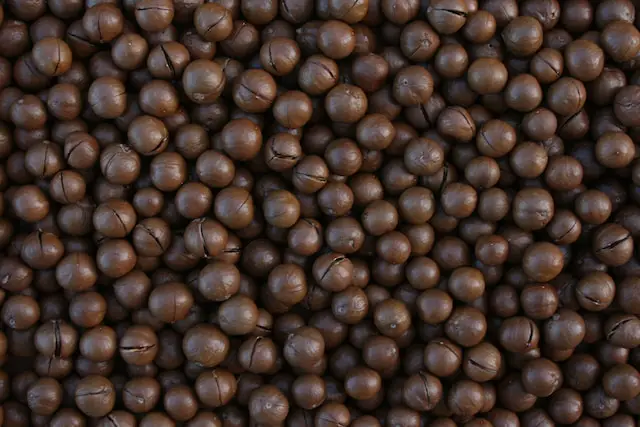
Walnuts
Since we’re on the topic of nuts, why not try Walnuts for a satisfying crunch?
With 65g of fat per 100g serving, they are an excellent addition to a Keto diet.
You can choose to snack on them or add them to your favorite dishes for extra crunch.
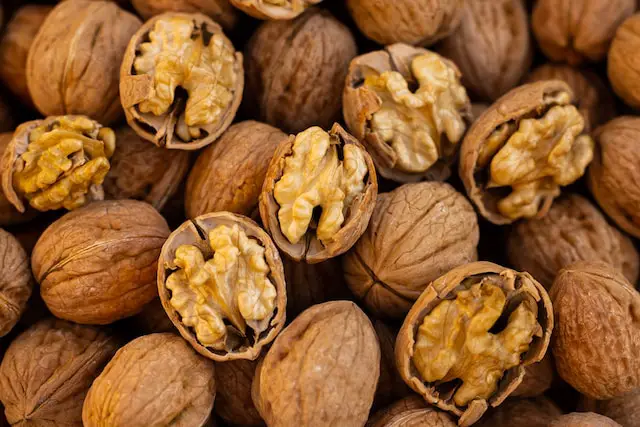
What Not to Eat
As I mentioned above, one of the key components of a successful Keto diet is cutting out carbs.
To achieve this, you’ve got to avoid carb-rich foods like potatoes, milk, rice, bread, and soft drinks.
These foods are high in carbs and can quickly derail your efforts to maintain a state of ketosis.
You can also practice reading nutrition labels for different types of food to identify what to eat and what to avoid.
To put it simply, avoid anything with more carbs and less fat, and take anything with more fat and fewer carbs.
Why You Should Try a Keto Diet
A Keto diet brings several benefits, including the ability to explore a wide variety of foods, noticeably increased levels of energy, and positive changes in your physique.
After consistently following a Keto diet for about 3-4 months, you’ll begin to notice the changes first-hand, and it’ll only motivate you to keep pushing.

Rapid Weight Loss
While the time it takes to lose weight will vary from person to person, one critical thing to note is that you will lose weight in this process.
Most people lose more than 10 lbs with a simple Keto diet that’s not even that strict.
However, with consistency and lifestyle changes, you might be able to lose even more.
Reduced Appetite
While on a Keto diet plan, you’ll notice a decrease in the frequency of meals you consume.
This is because the high-fat content in a Keto diet keeps you feel satiated for longer periods of time.
It’s best to prioritize high-fat foods in your morning meal to help your body start strong and stay full for long (That rhymed!).
Increase in Good Cholesterol
Incorporating healthy fats into your diet will help increase the levels of High-density lipoprotein (HDL), commonly called “good cholesterol.”
This will protect you against any heart disease and other related issues.
Blood Sugar Control
It may seem counterintuitive, but consuming an appropriate amount of healthy fats can actually balance out your blood sugar levels.
A Keto diet is particularly beneficial for individuals with type 2 diabetes, helping them efficiently manage their blood sugar.
Why You Shouldn’t Try a Keto Diet
Although the benefits of a Keto diet outrank the drawbacks, I believe you must know what you’re stepping into.
While this diet is highly effective for weight loss, it may not be sustainable for everyone.
Strict dietary restrictions can be burdensome for people to maintain over the long term, leading to frustration and eventual failure.
The health concerns that this diet brings to the table can scare off some people, but if you discuss this with your doctor, I’m sure you can go through it with ease.
Poor Diet Quality
A low-carb diet typically involves limited food options, which often exclude important dietary groups such as fruits, vegetables, whole grains, and dairy products.
This can result in reduced essential nutrients like fiber, which was once a part of your diet.
As a result, you may experience gastrointestinal issues such as constipation.
This is why I stressed the fact that you need nutrient-dense foods because your body needs other nutrients too.
However, since the battle is between carbs and fat, always choose fat.
Risk of Keto Flu
Since the Keto diet limits carb intake to less than 50g per day, this is a significant change for the body.
When starting this diet, your body may experience flu-like symptoms such as headaches, dizziness, and fatigue. Do not worry.
This is only happening because your body is trying to adapt to the state of ketosis. It will only last for a short period of time.
Risk of Kidney Stones.
Consuming a high-fat diet with limited carbs can increase the risk of developing kidney stones.
The intake of animal-based foods, such as dairy, meat, and poultry, can result in calcium excretion in your urine due to increased blood and urine acidity.
Therefore, it’s critical to maintain a balanced diet with many fruits and vegetables to prevent such medical issues.
Also, drinking plenty of water can really help in minimizing this risk.
Blood Sugar Risk
While the Keto diet can help individuals with type 2 diabetes, people with type 1 diabetes may be at a higher risk of experiencing low blood sugar.
This can result in symptoms such as shakiness, sweating, and confusion.
This medical condition is known as Hypoglycemia and shouldn’t be left untreated.
What are the 3 types of keto?
There are three main types of ketogenic diets:
Standard Ketogenic Diet (SKD)
This is the most common type of keto diet that you might have heard of. It involves eating very low carbohydrates, moderate protein, and high amounts of fat.
The idea is to get about 75% of your daily calories from fat, 20% from protein, and keep your carbohydrate intake to just 5%.
By doing this, your body enters a state called ketosis, where it primarily burns fat for fuel.
Cyclical Ketogenic Diet (CKD)
With this approach, you cycle between periods of strict keto eating and periods of higher carbohydrate consumption.
You’ll typically follow the standard ketogenic diet for most of the week (around 5-6 days) and then have 1-2 days where you eat more carbs.
This can be helpful for replenishing glycogen stores and providing extra energy for intense workouts or athletic performance.
Targeted Ketogenic Diet (TKD)
The targeted ketogenic diet allows for a small amount of carbohydrates to be consumed around your workouts.
You’ll eat a small portion of easily digestible carbs, like fruits or glucose, before or after your exercise session.
This can give you a boost of energy for your workout without significantly affecting ketosis.
Tips to Start a Keto diet as a Beginner?
Starting a keto diet as a beginner can be an exciting and life-changing experience.
Here are some steps that our readers have followed to help you begin your keto journey:
- Set Clear Goals: Figure out why you want to follow a keto diet. Is it for weight loss, increased energy, or overall health improvement? Knowing your goals will keep you motivated and focused along the way.
- Calculate Your Macros: Determine the right balance of fats, proteins, and carbs for your keto diet. As a general guideline, aim for about 70-75% of calories from fat, 20-25% from protein, and only 5-10% from carbohydrates.
- Plan Your Meals: Make a meal plan that includes keto-friendly foods. Focus on whole, unprocessed options like meat, fish, eggs, low-carb vegetables, healthy fats, and dairy products. Look up keto recipes and create a shopping list.
- Clean Out Your Pantry: Remove tempting high-carb foods from your kitchen. Say goodbye to items like grains, sugary snacks, starchy veggies, and processed foods. Creating a supportive environment will make it easier to stick to the diet.
- Stock Up on Keto Foods: Fill your pantry with keto-friendly alternatives. Buy foods such as meat, fish, eggs, avocados, nuts, seeds, low-carb veggies, full-fat dairy, and healthy oils. Having these options readily available will make meal preparation simpler.
- Stay Hydrated: Drink plenty of water throughout the day to support your body’s transition into ketosis. Aim for at least eight cups of water daily. Hydration is essential for overall health and helps with the adjustment process.
- Track Your Macros: Keep a record of your daily food intake and macronutrients. You can use a food diary or mobile apps to monitor your fat, protein, and carbohydrate intake. This will help you ensure you’re staying within your desired ranges.
- Be Patient and Persistent: Remember that transitioning into ketosis takes time, and everyone’s experience is different. Be patient with your body as it adapts to the new eating style. Stay focused on your goals and trust the process.
The Bottomline
The Keto diet plan has gained immense popularity worldwide, with millions of people trying it out every day.
While most have succeeded with this diet, some have also faced challenges.
In any case, it remains one of the most effective ways to reduce body fat and lose weight.
Note that this sudden change in diet can cause some health issues, as we discussed above, making it essential to take precautions and practice it safely.
If you’re still not convinced you should take a Keto diet, you can lose weight and build muscle with a High-protein diet plan. Stay safe, stay healthy.
All the Best, King!

